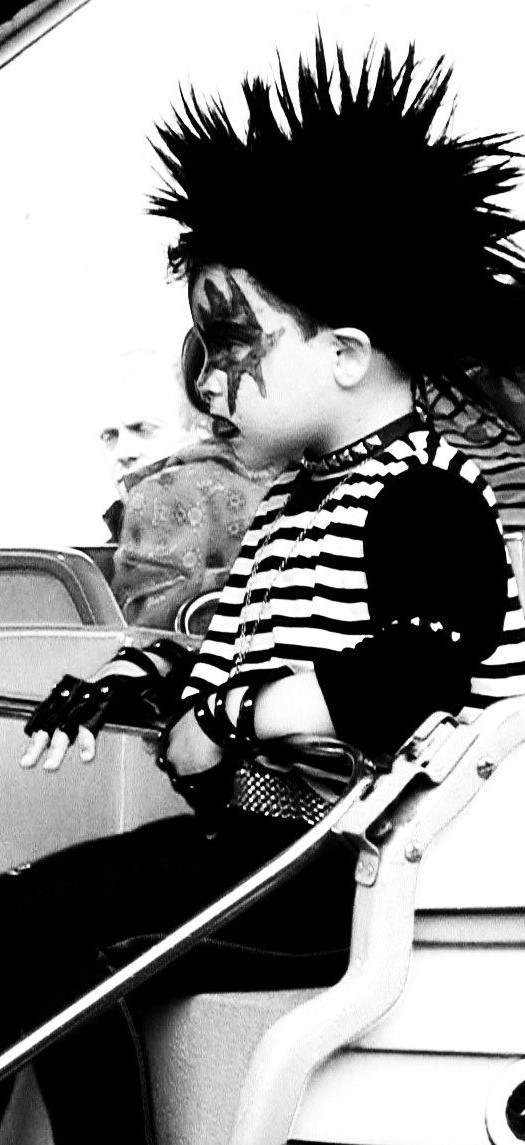 Gabriela Denise Frank is the author of CivitaVeritas: An Italian Fellowship Journey, a collection of essays and prose poetry. In 2014, her Pushcart Prize-nominated story, “Pas de Deux,” was published in Behind the Yellow Wallpaper: New Tales of Madness. Her work is supported by the Northwest Institute for Architecture and Urban Studies in Italy (NIAUSI), 4Culture and Jack Straw. www.gabrieladenisefrank.com
Gabriela Denise Frank is the author of CivitaVeritas: An Italian Fellowship Journey, a collection of essays and prose poetry. In 2014, her Pushcart Prize-nominated story, “Pas de Deux,” was published in Behind the Yellow Wallpaper: New Tales of Madness. Her work is supported by the Northwest Institute for Architecture and Urban Studies in Italy (NIAUSI), 4Culture and Jack Straw. www.gabrieladenisefrank.com
Gabriela, in “Into the Light,” a story from your collection in the works, Lou can’t shake past memories of her abusive father. It’s holding her back in her relationship with Sam, an all-around good guy and self-defense instructor who’s taught her how to fight back against attackers, men like her father. What she’s learned becomes invaluable when things come of a boil with her neighbor, Nils. Would you say the story’s climactic encounter is a figurative and nearly literal representation of Lou coming to grips with her closeted past?
It’s both figurative and literal, and also karmic. As humans, we get caught in traps of our own making, oftentimes the very snares that we were hoping to avoid. I think that’s because we’re attracted to patterns. Patterns can keep us alive –we learn to identify and avoid dangerous situations like dark alleys, for instance– but certain relationship dynamics can become so inborn that they inhibit our growth, if we’re not very evolved. When we are unaware as to how patterns play out in our lives, or even that they are there at all, we live at their mercy.
Like Lou, Nils is also haunted by his past. He can’t break away from his infatuation with his first true love, Maggie, and spends his life trying to recreate those experiences through flings with young redheads who remind him of her. By his actions in the story, he seems a thoroughly wretched creep. Still, he’s an intelligent man whom many of his students come to idolize. Should readers have any sympathy for him?
Sympathy might be a bit strong, but there’s certainly a call for compassion. None of us is all one thing. We contain seeds of kindness and malevolence in their many forms, and either has the potential to take hold at any time – maybe even both in the same moment.
When writing Nils, it was important to me that he had redeemable qualities, including the capacity to inspire his students. If Nils is purely awful, then he’s merely a prop and we can write him off. In this case, we see the potential for something else. If other characters can look at him and perceive some goodness, don’t we have to question our own assessment? I don’t believe that he’s necessarily happy being as terrible as he becomes; I think that he, too, wants to be saved, and he struggles with that desire as well as the fact that no one meets it, including himself.
The narration in the story is interesting, with a back-and-forth POV between Lou and Nils. Was there a particular reason you chose to tell the story this way?
In my mind, this is really Lou’s story, but I wanted to play with the idea that there is never one end-all, be-all definition of human relationships. Personal interactions are like car accidents; each individual will give a different account of what he or she believes is the truth. I wanted to fuel the notion that there are multiple ways to think about Lou and Nils.
I also love bringing backstory to my characters, and I wanted Nils’ and Lou’s backstories to be told in thoughts and memories. In fact, sometimes when I write, a character’s history comes to me before the present action. To me, backstory is a very Buddhist concept; none of us exists inherently – we are part of a larger continuum, a never-ending conglomeration of experiences and selves. There doesn’t have to be a smoking gun in someone’s past, but I find it fascinating to consider all the things that had to happen prior to the present moment in order for that moment to arrive, and how everything before that moment influences the choices a character makes.
To me, the richest characters and stories come from a larger continuum of experiences, feelings, physical forms and ideas that influences the capacity for charity or revenge at every turn. Which path will a character take and why? What effect does that choice have on her life and the lives of others? How does she wrestle with things internally, and does she have the capacity for change? This is why literature is the art form with the most potential to impart empathy: we can see the internal struggle of characters who grapple with the same choices that we encounter every day.
Can you talk a little about the collection you’re putting together? Are the stories tied together by any central theme(s)? How does “Into the Light” fit in?
I’m working on a collection of linked short stories set in the Pacific Northwest whose central female characters present a modern taxonomy for aging, self-image and personal evolution. The collection will explore deep, universal struggles intrinsic to the human condition —obsession, revenge, betrayal, mid-life crises— told through the lens of modern characters like Lou. The distinctive natural and urban setting of the Northwest, particularly Seattle, will provide a backdrop for the cast whose stories will encourage readers to look more deeply within themselves and consider the motivations of others in a new light.
“Into the Light” is actually the second story to be published so far. The first was “Pas de Deux,” which was collected in an anthology called “Behind the Yellow Wallpaper: New Tales of Madness” by New Lit Salon Press in 2014. Each story in that volume is paired with original art by Loreal Prystaj – it’s a darkly enjoyable collection.
Do you have a completed manuscript at this point? What are the next steps as far as seeing the book to publication?
I’m getting there! I have a flash piece called “What We Return” coming out soon and I’m also working on some longer pieces. At this point, I have a table of contents in mind of the stories I want to tell; it’s just a matter of starting some and finishing others. As an emerging artist, I wanted to publish a few of the stories in literary journals to demonstrate a market for my work. Now that I have those credits in hand, my next step is to find representation and a home for the collection. I’ve also got the beginnings of a book of essays in mind (I’ve completed a few pieces), but I see that as the next project.
In addition to writing, I’m applying for fellowships and residencies to help support my work. I have a full-time job, so finding the mental space and actual time to write is always the trick, but writing is what feeds me, so the fuel for the fire is plentiful.
What other creative projects have you got going these days?
Lately, I’ve been experimenting with combining literary art, visual design, performance and installation as a means of transforming writing and storytelling into a shared experience. In November 2014, I staged A Novel Performance, a month-long installation at Seattle’s Central Library during which I wrote the first draft of a 70,000-word novel under the rubric of NaNoWriMo (National Novel Writing Month) as a live performance. Imagine a living room set on a stage with a large monitor that allowed strangers to watch me type – it was terrifying and fun at once.
This July, I will open Ugly Me, a multi-media installation that explores concepts of value, identity and self-worth, at the Jack Straw New Media Gallery in Seattle. For that, I’m writing and recording a series of prose poems that visitors will hear as they walk explore the installation. All of these projects interrelate and inform each other, although I’m starting to think I need an intern!
Thanks, Gabriela. Is there anything else you’d like to share with or explain to readers?
I’d like to thank Anthony Doerr (author, most recently, of “All the Light We Cannot See”), who was tremendously generous in his feedback on this story, and my Tin House fiction cohort who helped me workshop this piece with him last summer. Their collective critique was absolutely vital to the piece.
Read “Into the Light,” a story from Gabriela’s collection in progress
